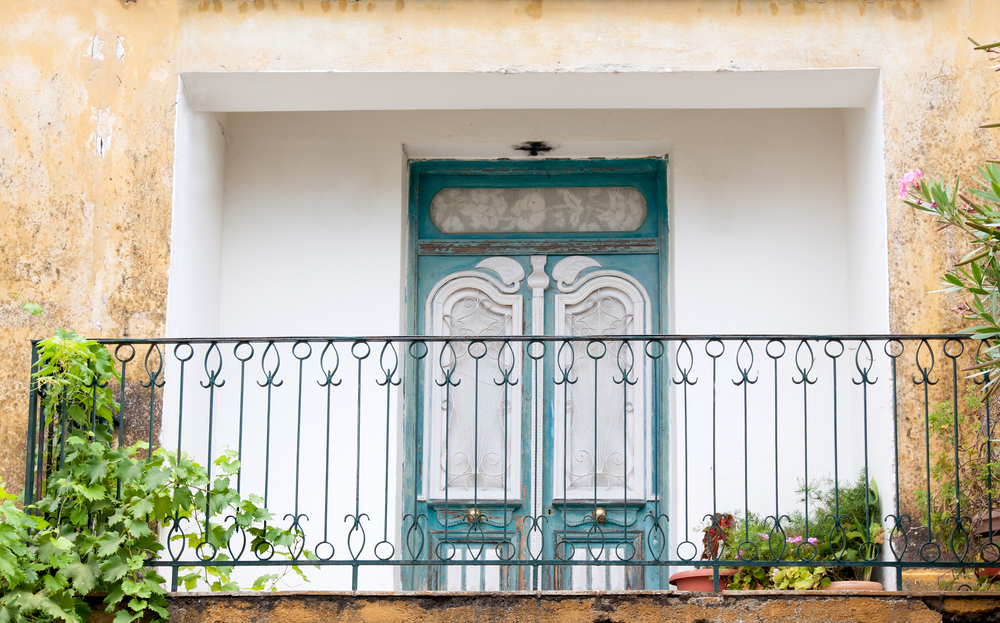Balcony railings are a fundamental design element, both for looks and function. Balancing these factors is important if you want a balcony that’s safe and designed the way you want.
Whether you’re building a new balcony or just want to understand the options, here’s a crash course in balcony railing design. We’ll cover styles, materials, guidelines and much more.
Elements of a Balcony Railing
Let’s start with the basic bit: the elements of a balcony railing. These can vary depending on the design and materials, but the main components are:
- Posts. These are the support elements that hold things in place. Generally, posts are thicker or more defined than other elements.
- Spindles or balusters. These are the vertical or horizontal elements that make up the main construction of a railing. They’re thinner than posts and can include decorative elements.
- Handrail. The handrail is the top part that runs horizontally. It’s also called the guard rail, or simply the railing.
- Post caps. Also called finials, these are the elements that, unsurprisingly, cap vertical posts.
Of course, a balcony wall won’t have many of these elements, as they’re made of solid materials. For the purposes of this article, we’ll also be discussing walls that serve the same function as railings.
Balcony Railing Materials
Although there are numerous different ways to design a railing, most use the same set of materials. These are:
Metal

Metal is a common option because it’s strong, durable, and functional. It could be stainless steel or aluminum in more modern designs or wrought iron in more traditional railing setups.
Pros
- Versatile styles
- Long-lasting and rust-resistant (depending on materials)
Cons
- Some metals need maintenance
Tempered Glass

Glass is another option for modern railings. It’s used as sheets, usually held in place by metal railings. The glass is pretty strong and means you have an uninterrupted view.
Pros
- Modern
- Safe, long-lasting and durable
Cons
- Expensive
- Requires regular cleaning to look good
- Minimal privacy
Wood
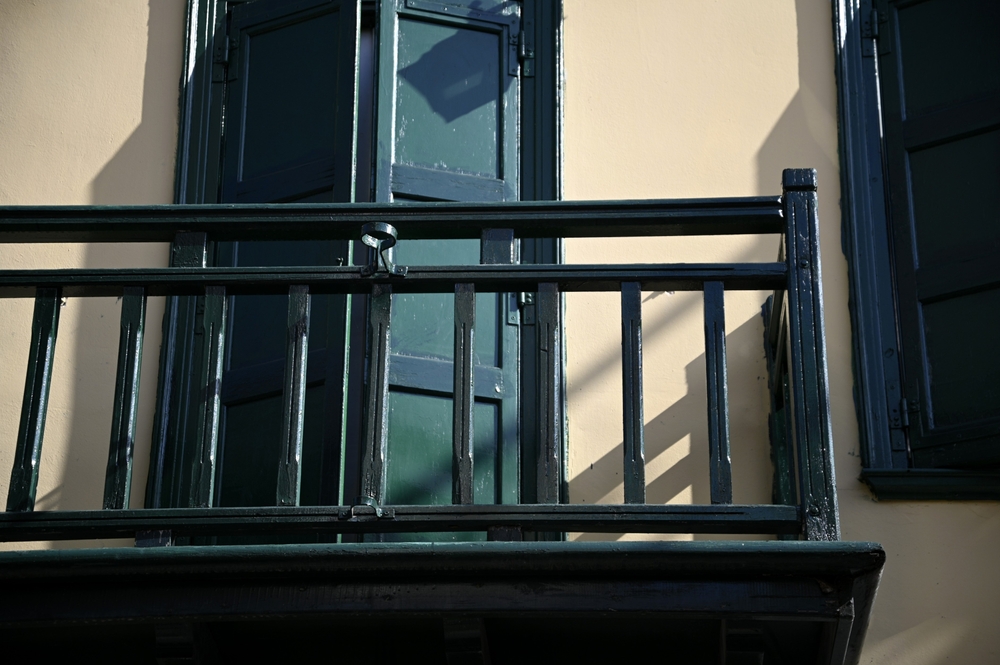
Wood is a more classic option for railings, but needs regular maintenance to remain safe. You typically won’t find wood balcony railings on high-rise buildings for this reason.
Pros
- Classic style
- Can be painted any color
Cons
- Not the safest option
- Requires replacement when it’s too weathered
Brick/Concrete
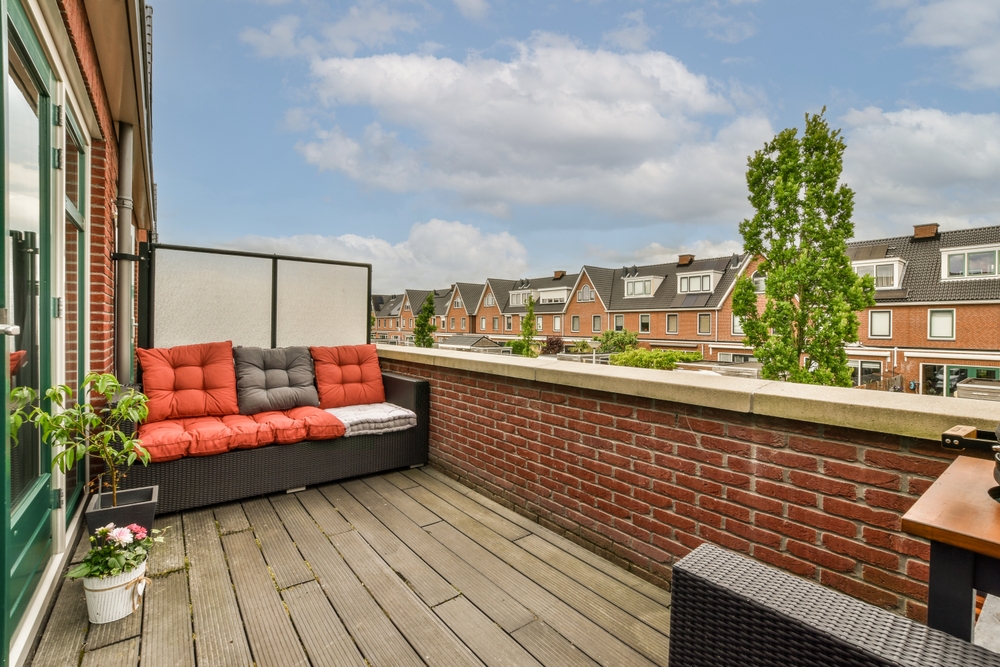
These materials are used for walls rather than railings. They’re sturdy and long-lasting, and can be painted or mortared to match any style. Obviously, a downside is that you can’t see through them, although this can also be an advantage.
Pros
- Sturdy and weather-resistant
- Can be painted any color
Cons
- Not a particularly versatile option
Composite
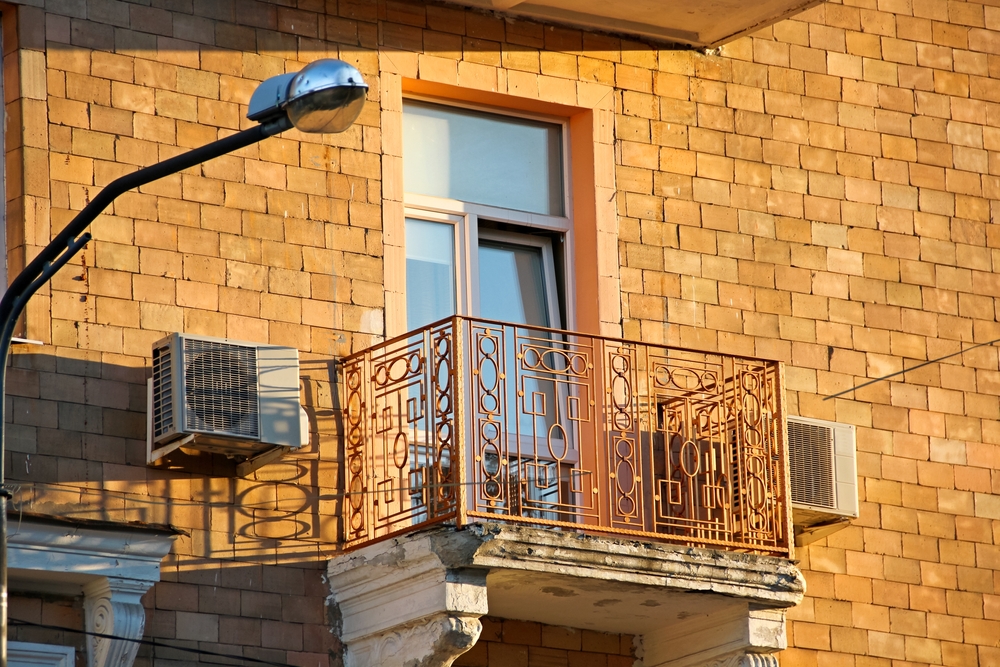
Composite balcony railings are made from two or more materials. Solid composites are often wood fibers and plastic, meaning they’re durable and weather-resistant. Plus, they can be made into any design and color imaginable.
Pros
- Can be tailored to any style or design
- Inexpensive
- Durable
Cons
- Can look a bit cheap
Styles of Balcony Railing
Generally, we can divide balcony railings into 2 styles: classic and modern.
For example, stainless steel, aluminum and glass railings fall more into modern designs. They’re the sort of railings you’d find on contemporary buildings. On the other hand, wood and wrought iron would be more classic styles that you’d find on older buildings. Walls made from brick or concrete can be either depending on how they’re styled.
Unless you’re building your balcony railing from scratch, it’s not really worth thinking too hard about styling your balcony around the railing. While it certainly adds to the look, you can style any balcony railing to match any general décor style.
That said, if you’ve got something like a glass railing, modern styles will work much better than things like boho. If you want a compromise, Scandi style will work well.
Railing Patterns
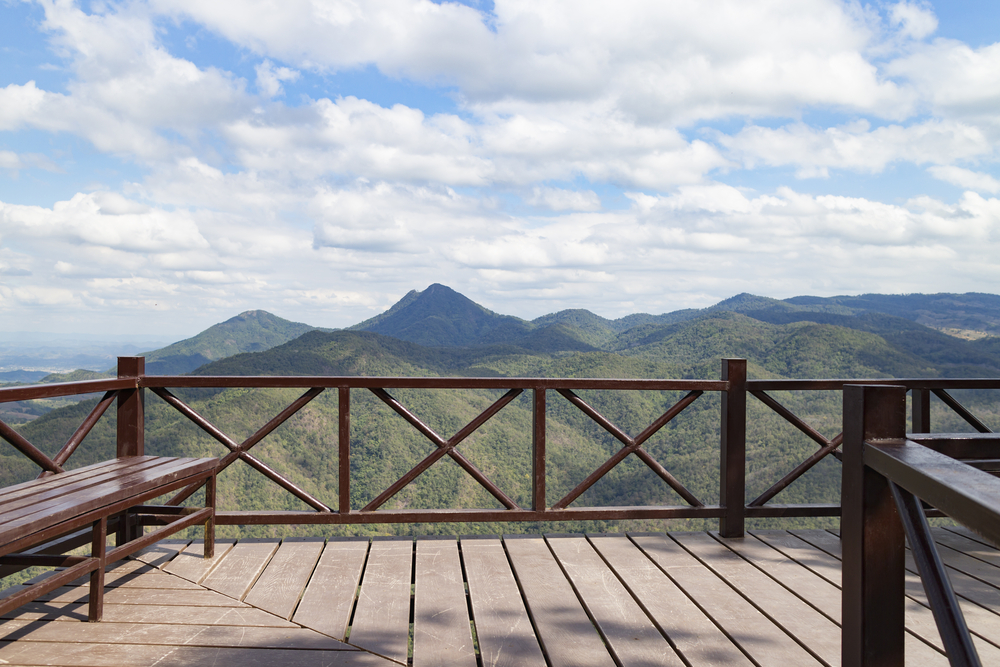
There are almost as many railing patterns as there are styles they can fit into. Of course, glass railings and concrete walls are going to be fairly standard, but you can have lots of variation in wood and metal railings. Some popular options include:
Diagonal Railings
Unsurprisingly, this is where the railing pickets are at a diagonal, while the support posts remain vertical.
Wrought Iron
One of the main advantages of wrought iron is that it can be made in numerous shapes and patterns. You could have:
- Baskets
- Swirls
- Squares and boxes
- Arches
- Scrolls
While these are standard options, you could have anything you wanted if you’re willing to pay an iron worker to make them for you.
Criss Cross/Hatch
This is another self-explanatory style. The pickets are in crosses or hatch shapes. Depending on building codes, this style might not be possible because the gaps might be too big.
Horizontal Pickets
Much like diagonal railings, this pattern simply includes horizontal pickets. It works with wood and metal, but is also popular with stainless steel wire for a more modern look.
Balcony Railing Design Rules
Balcony railings have fairly strict design rules, particularly for balconies above the first floor. After all, they’re all that stands between you and falling off! Building codes vary by area, but some standard rules include:
- There shouldn’t be any gaps bigger than 4 inches. This is often known as the 4-inch Sphere Code.
- Railings shouldn’t have any surfaces or materials that can cause injury or snag clothing
- All railings more than 30 inches off the ground need a guardrail.
Other than safety rules, it’s completely up to you how you style your balcony railing. Mortared walls are potentially the most versatile, as you can do a lot with a coat of paint. Failing that, you can dress railings up with planters, bar tables, and climbing plants.
This is why it’s often not worth worrying too much about what the railing looks like. If you don’t like it, you can just cover it up with something more attractive.
Final Thoughts
It’s easy to overlook the style of balcony railings in favor of their function. However, there’s a lot you can do with available materials and styles, so there shouldn’t be much stopping you from designing the balcony railing of your dreams!
